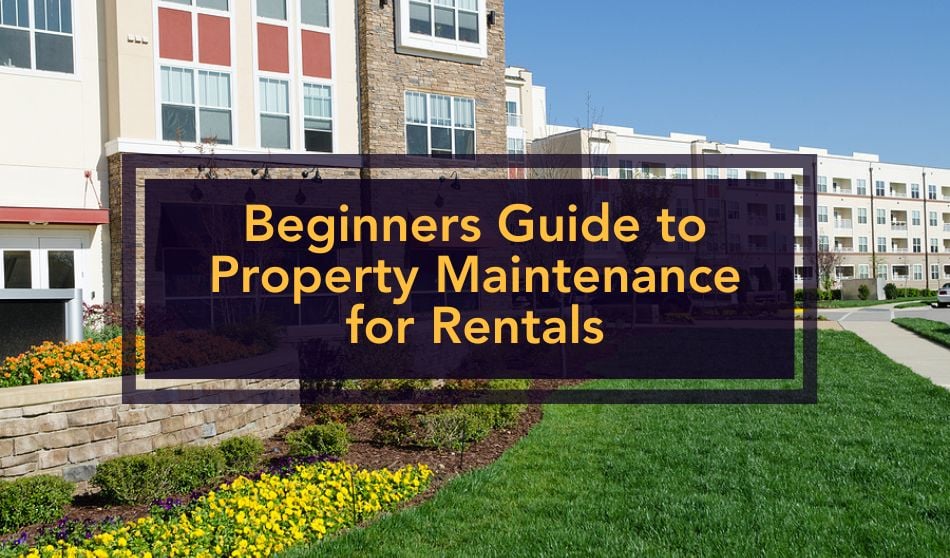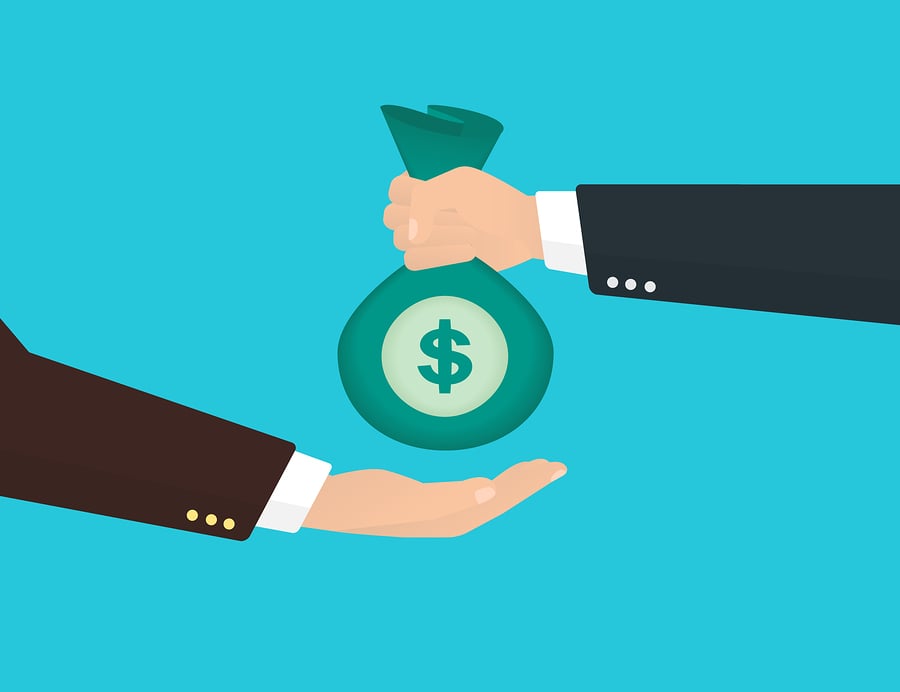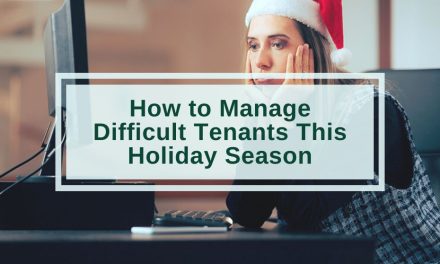
As a landlord, understanding the fundamentals of property maintenance for your rental properties is crucial to maintain your investments and ensure tenant satisfaction. Below, you’ll find an in-depth overview of essential practices, tips, and strategies to effectively manage and upkeep your rental properties, so you can preserve your property’s value and also foster long-term tenant relationships.
Maintenance is one of the first characteristics I consider when evaluating a new rental property. I consider how much maintenance will be required prior to move-in, seasonally, and annually. Property maintenance can have a significant impact on profitability, which is why it’s top of mind before I even begin crunching numbers on a potential deal.
Age of the property has a huge influence on property maintenance. As well as amenities, property class, landscaping, and the surrounding neighborhood. For example, a brand-new property in a new development would require more upkeep to match the aesthetics of the surrounding neighborhood.
I’ve personally experienced the difference in property maintenance when purchasing a 1971 multi-family property compared to a 2007 duplex. The older property was very profitable, however, upon walking through each unit, all I could see were the dollar signs of the required maintenance we’d need to invest to bring the property up to the standards we like to maintain as landlords.
My expectation (and my tenant’s) of a property’s value is deeply connected to the area and neighborhood overall. When deciding how much time and money to invest into maintenance, I keep comparable properties locally in mind, as well as the neighborhood as a whole. I also think about the quality of housing I want to maintain in my portfolio and the cost it will take to bring a property up to that level, like that 1971 multifamily.
Ultimately, each property will require its own budget for maintenance that will influence your purchase decision. My advice is to be conservative with your maintenance budget when putting these numbers together, especially with your first few investments. If you currently own a home, you might be surprised at the differences between maintaining your primary residence compared to a rental property. This guide below outlines all the areas of property maintenance to consider for rental properties.
The Importance of Property Maintenance
Property maintenance directly influences the financial health, market appeal, and long-term sustainability of your rental investments. It significantly impacts the property’s market value and overall profitability. When you prioritize maintenance, not only will you be more likely to attract quality tenants and minimize the chance of vacancies, but you’ll also be able to command higher rental rates. Regular maintenance enhances tenant satisfaction, thereby reducing vacancies and ensuring a steady stream of income.
A well-maintained property also reflects professionalism and care, instilling confidence in tenants that you’re committed to providing a comfortable and safe living environment. Taking care of your property safeguards and your reputation while also setting the foundation for a positive relationship with your tenants. In turn, your tenants will be more motivated to respect the property and renew their lease. Plus, if you keep your tenants satisfied, they’ll be happy to give you good reviews and provide word-of-mouth recommendations, which will pay off when you want to attract new tenants.
Neglected maintenance, on the other hand, can potentially result in costly repairs or legal liabilities, which could erode your property’s value and adversely impact your profitability.
Where to Begin
Create a Checklist
A routine maintenance checklist will help ensure that your property remains in optimal condition and prevent small issues from snowballing into big expenses. Conduct regular inspections of plumbing and electrical systems, HVAC units, roofing, and your property’s structural integrity.
Some other basic maintenance tasks you should include on your checklist are:
- Carbon Monoxide and Smoke Detector Checks: Test and ensure the functionality of carbon monoxide and smoke detectors throughout the property. Replace batteries as needed to guarantee they are in working order, ensuring tenant safety.
- Inspections for Water Leaks or Damages: Check for water stains on ceilings or walls, dampness or mold growth, and signs of water pooling around fixtures or appliances. It is especially important to do this after it rains or snows. Be sure to also check water heaters and pipes.
- Replace Filters: Over time, filters accumulate dust, dirt, pollen, and other particles, causing them to become clogged and less efficient. As a result, dirty filters can trigger system malfunctions and also increase utility bills. Depending on the filter type and usage, it’s best to replace filters every 1 to 3 months.
- Pressure Washing: Plan to pressure wash the property at least once a year. This will increase its lifespan and prevent mold or mildew buildup.
- Flush the Water Heater: It’s not uncommon for sediment buildup, minerals, and debris to accumulate at the bottom of the tank. Flushing the water heater (at least once a year) will increase its efficiency and ensure optimal performance.
How To Calculate A Property Maintenance Budget
To determine a budget, you can use the formulas presented below:
The 1% Rule
The 1% rule suggests allocating approximately 1% of your property’s value toward maintenance expenses annually. For example, for a rental property valued at $250,000 you might plan to budget around $2,500 per year for maintenance costs. This estimation allows landlords to anticipate and set aside funds for ongoing upkeep and potential repairs, helping to ensure the property remains in good condition and retains its value over time.
Square Footage Formula
In contrast to the 1% rule, this formula proposes a maintenance cost of $1 per square foot annually. For instance, for a rental property with a total square footage of 1,800 square feet you might choose to allocate approximately $1,800 to cover maintenance expenses.
Monthly Rental Formula
The monthly rental formula estimates maintenance costs at approximately 1.5 times the monthly rental rate for all annual maintenance expenditures, including taxes, insurance, repairs, and more. These formulas offer general estimations; however, individual property conditions and various factors may influence actual maintenance expenses beyond these guidelines.
Let’s assume you own a rental property with a monthly rental rate of $2,000. Using this formula, you might anticipate that the annual maintenance costs for this property could be around $3,000.
Recommended Property Maintenance Schedule
Having a structured property maintenance schedule is key to ensuring the consistent upkeep and longevity of your rental properties. It helps in systematically addressing maintenance tasks, reducing the likelihood of unexpected repairs or deteriorations that could disrupt tenant satisfaction or property value.
To keep your property maintenance in tip-top shape we recommend conducting daily, monthly, quarterly, and annual checks. In addition, it’s important to conduct routine maintenance and inspections each season.
Maximizing Tax Benefits: Understanding Rental Property Maintenance Deductions
As a rental property owner, the IRS allows you to deduct expenses from the rental income your property generates. The deductions encompass expenses associated with property maintenance, such as the costs of materials, supplies, repairs, and other maintenance needs that are used to keep your investment in good condition. However, major improvements like a new HVAC or roof, for example, cannot be deducted. Instead, they must be depreciated or capitalized.
To help you distinguish between deductible maintenance costs and capital improvements, the IRS has established “safe harbors”. These include:
- Invoices that are $2,500 or less
- If the total spent on property repairs and maintenance is below $10,000 or 2% of the unadjusted property basis, given that total revenues are less than $10 million and the unadjusted property basis is under $1 million
- Repairs that qualify as routine maintenance when they meet these four specific criteria:
- They involve recurring activities related to the rental property
- Arise from normal wear and tear
- Ensure the property operates efficiently
- Are required to be performed more than once within a 10-year timeframe
By maximizing rental property maintenance deductions within IRS parameters, you can reduce tax liabilities, enhance property profitability, and allocate resources effectively for ongoing property maintenance and future improvements. If you have any questions, be sure to reach out to a tax professional.
Helpful Property Maintenance Tips for Beginners
Consider Property Maintenance Software
By using property maintenance software, you can efficiently organize maintenance tasks, schedule inspections, track repairs, and manage work orders seamlessly. Property maintenance software enables you to organize maintenance schedules, conduct inspections, monitor repairs, and handle work orders with ease. Beyond enhancing operational efficiency, it also contributes to tenant satisfaction and property value preservation. Most full-featured property management software solutions will have the ability to track maintenance requests and even allow tenants to place requests via a tenant app whenever a repair is needed.
Communicate Clearly With Tenants
Always maintain open lines of communication with your tenants regarding maintenance issues. Encourage tenants to report any maintenance issues promptly, emphasizing the importance of their timely notifications. Give them clear instructions about how to report issues, including who they should contact and how to submit requests. And, implement various communication methods such as email, phone, or an online tenant portal for ease of reporting. Remind them that addressing these concerns promptly is crucial for their comfort and safety.
Don’t Procrastinate
Just like you expect your tenants to inform you of any maintenance issues in a timely manner, it is equally imperative for you to be responsive and attend to their issues as soon as you can. Being attentive and addressing tenant concerns quickly demonstrates a commitment to their comfort and safety, reinforcing trust and respect in the landlord-tenant dynamic. Timely resolutions not only mitigate potential risks to the property but also signify your dedication to providing a well-maintained living environment, ultimately contributing to tenant satisfaction and fostering a positive rental experience.
Keep Records
Detailed maintenance logs can be vital for legal or insurance purposes, providing evidence of diligent property management practices and showcasing efforts made to address maintenance concerns. When it comes to financial planning, maintenance records can also help you accurately budget for ongoing maintenance and assess the property’s overall condition over time.
Stay Up-To-Date With Building Codes and Regulations
To maintain compliance and steer clear of potential penalties or legal trouble, you need to be aware of building codes and regulations. Be sure to familiarize yourself with the codes specific to your jurisdiction and stay informed about any updates regarding regulations since they can impact your responsibilities as well as your rental property.
Outsource Tasks If Necessary
While you might be tempted to manage the maintenance of your property all on your own to save some money, sometimes it’s better to outsource some of it instead. Delegating maintenance tasks especially for specialized repairs like landscaping and janitorial services to professional contractors can save you time so you can focus on other high-priority tasks.
Always Be Professional
Professional conduct showcases a commitment to high standards and effective management. It ensures that all interactions related to maintenance are conducted respectfully, efficiently, and in compliance with legal obligations. Professionalism in addressing maintenance concerns also reflects positively on the property’s reputation, contributing to tenant satisfaction and retention.
Starting Off On The Right Foot
There’s no doubt that managing a rental property comes with a long list of maintenance tasks. However, by staying organized and on top of your responsibilities, you can ensure a well-maintained property that meets the standards expected by tenants. When you are prepared to proactively address maintenance needs, you can foster a comfortable and safe environment for tenants while simultaneously preserving your property’s value. Ultimately, a diligent and systematic approach to property maintenance will not only help you maintain a positive reputation, but will also contribute to long-term profitability and success in the rental market.
Final Thoughts
Creating a property maintenance budget, developing a property maintenance schedule, and understanding your tax benefits for maintenance expenses are necessary steps for all real estate investors. When you first start purchasing rental properties you should carefully consider all these factors, but I assure you that it will become routine and automatic as you continue to grow your portfolio.
Most of my properties are currently under property management, so I get to defer the personal management of most maintenance tasks. My biggest consideration for property maintenance is making purchase decisions for repairs and when it comes to the initial evaluation of a deal. Even with property management, I ensure that my property manager and I are on the same page when it comes to budget, quality, and maintenance schedule.






Thanks for mentioning such a thing as flushing the water heater! Unfortunately, it’s something that many people neglect.
By the way, tankless water heaters are less prone to scale buildup compared to traditional tank heaters. This is because tankless water heaters heat water on demand, minimizing the continuous exposure to hard water minerals that cause scaling. Although tankless water heaters still require descaling, it is needed less frequently, making them a more efficient and lower-maintenance option.